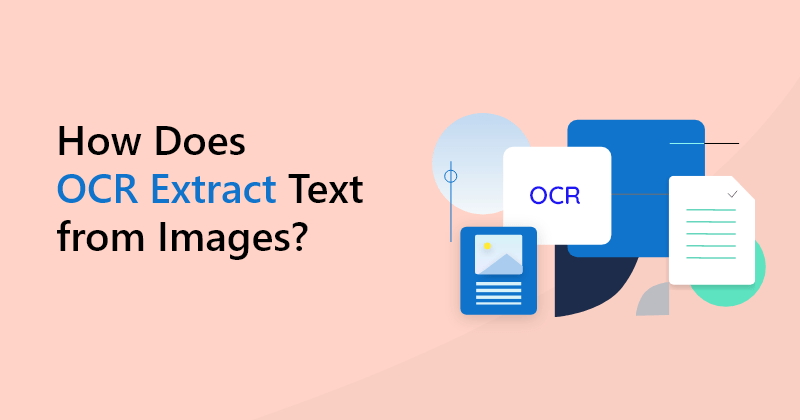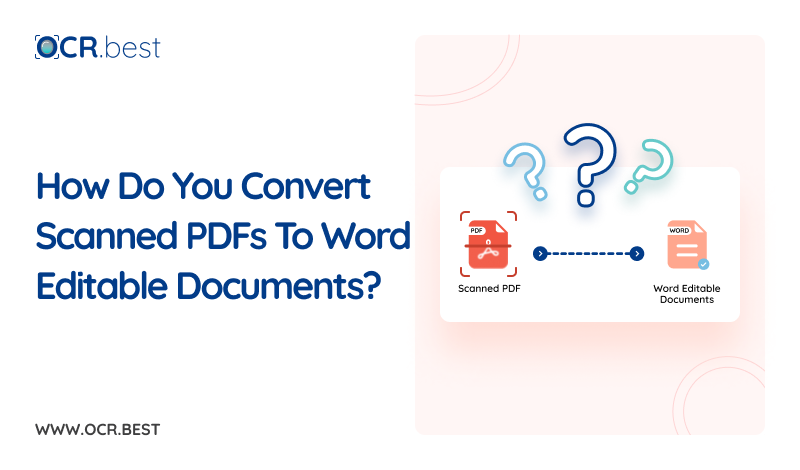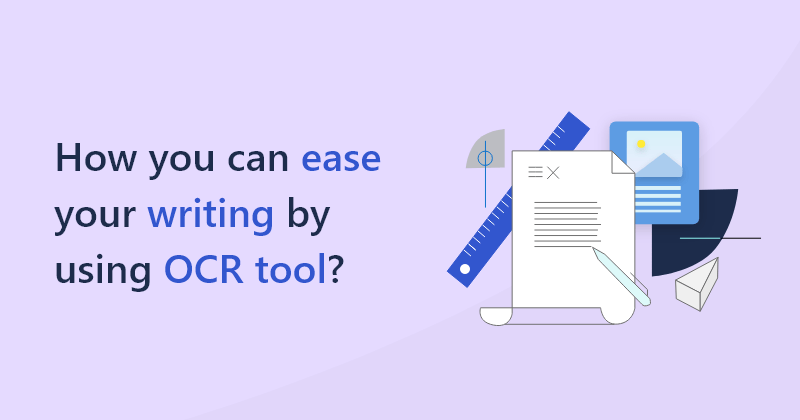How Does OCR Extract Text from Images?

Have you ever watched a science fiction movie portraying robots?
The most fascinating thing about these movies is the surreal human-machine interaction.
How different our world would look if machines started understanding our languages?
It is yet a far cry from today, however, you can foresee its glimpses in the OCR technology.
Since its inception, this technology is becoming more accurate, and more useful, as researchers and scientists are discovering new ways to use this tool.
Besides, converting image to text, these tools are being used in marketing, security, and many other domains of life.
What is OCR?
OCR stands for Optical Character Recognition, a technology that extract text from image and convert them into machine-readable format, which later can be used for different purposes.
Before moving towards its working, you should know its history.
Evolution of OCR:
The image to text converters we see today is not the same developed for the first time.
Its history is replete with twists and turns, taking us back to the early nineteenth century.
Children are not born with the faculty to read and understand written script even in their mother tongue. They develop the muscles gradually and by the time they become able to read any handwriting.
However, current OCR is still far behind reading any style of hand-writing, but it is having gradual improvements.
The history of OCR starts from the history of scanning. Flat-bed and drum scanners revolutionized the scanning of full-page text.
On the other hand, researches were being conducted since the 1800s. A major milestone was the invention of the Optophone, developed by Kurzweil company to help the impaired.
During its production, two new products were produced namely, the CCD Flatbed scanner and the text-to-speech synthesizer.
The product was launched at a conference of the National Federation of the Blind. He sold Optical Character Recognition technology commercially in 1978.
Since then there is no looking back and the technology has grown to implement Artificial Intelligence.
How OCR extract Text from Image?
An OCR uses three main phases to recognize any writing inside an image.

These phases are:
Preprocessing:
In preprocessing stage relevant parts of the text are extracted for segmentation and recognition.
Some features can be omitted depending upon the type of recognition process and image.
- The image is rotated at horizontal and vertical angles.
- Slanting and skewing are done using different techniques.
- Hough transformation is used to find the average slope of the text.
- You can also use directional histograms to compute the horizontal and vertical slopes of the specified text.
- To remove noise, the image is filtered.
- Thresholding is done to change the color of every pixel to black and white.
- Thinning is done to reduce the pixels of characters to only 1.
- By thinning, we get the text skeleton.
- Thickening is also done where necessary.
Segmentation:
In the segmentation stage, the whole preprocessed text is cut into sentences, words, and characters.
- First of all, the device cuts each word in a sentence based on the probability of sequential cuts.
- The best cuts define the space between words adjacent to each other.
- If an obtained word is either smeared or removed, lexical analysis finds the best probable word instead of that word.
- A word recognizer employs techniques to do syntactic analysis.
Recognition:
It is the most important part of any OCR because here the text is recognized and extracted into digital form inside a computer.
It uses different methods and techniques to recognize the characters of a text.
It may involve any of the following techniques:
- Soft computing approach.
- Character recognition using MLP.
- Fuzzy genetic algorithm.
- Generic neural networks.
Why conventional OCR cannot give accurate results?
- Ordinary OCR finds it difficult to remove 100% noise and unexpected lines and words inside the text.
- These OCR tools have a fixed template, that is, they can’t recognize and distinguish different types of data such as if the device is fixed on handwriting submission, it cannot recognize forms or bullet points.
- Some tools cannot recognize tables and borders.
How AI can increase the accuracy of OCR?
AI is revamping old technologies and developing new ones, thus contributing positively to overall technological advancement.
It upgrades and adds to the efficiency of a conventional in the following ways:
- Its machine learning algorithms make comprehensive pre-processing. The device is taught with a plethora of data and it learns through deep learning.
For this reason, it becomes more intelligent in decision making and logic forming.
- AI employs intelligent data processing or IDP to extract varied and unstructured data thus increases the versatility of OCR.
Therefore, this technology is being used to understand different templates of text. As compared to conventional OCR, it provides good results.
Final Words:
OCR is a revolutionary tool to scan and extract text from any type of image. Though old technology contains certain issues, yet AI is trying to resolve all of them.
You can even use this tool to extract handwritten text or any kind of text inside an image automatically.


_and_How_it_Work-min1.png)









